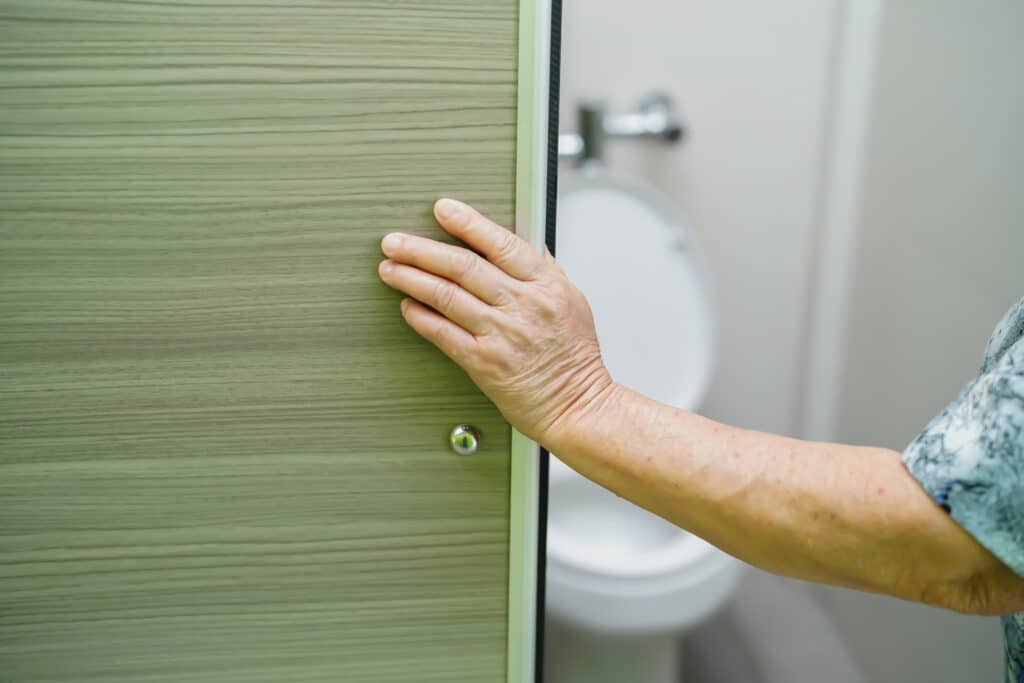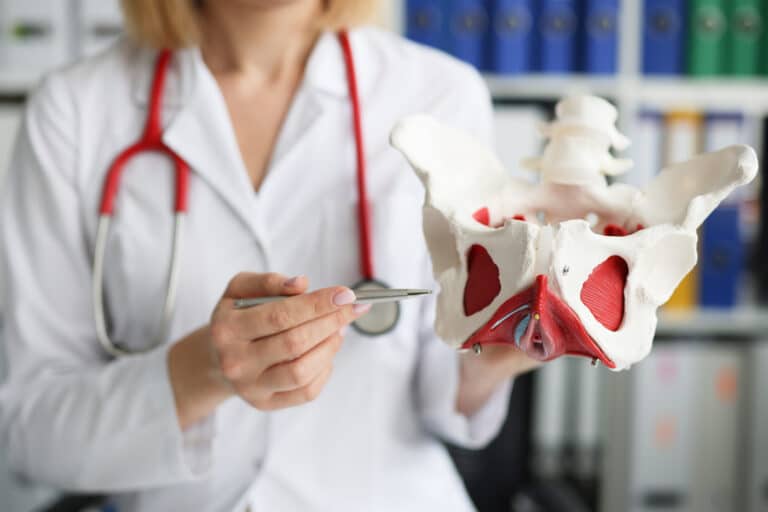Urinary Incontinence is the involuntary loss of urine that can happen at any time. It can affect anyone at any age, but it is more common and severe among older adults. UI can interfere with daily activities, social life, and self-esteem. It can also increase your risk of infections, skin problems, and falls.
Urinary incontinence is not something you must live with or accept as a normal part of aging. There are many causes, types, and treatments for urinary incontinence, and you can take steps to manage it and improve your quality of life.
This article will explain the varieties of urinary incontinence, its symptoms, causes, risk factors, types, and treatment options.
What is Urinary Incontinence?
Urinary incontinence is not a disease but a symptom of an underlying problem that affects your bladder or pelvic floor muscles. Your bladder is a hollow organ that stores urine until you are ready to empty it.
Your pelvic floor muscles are a group of muscles that support your bladder and urethra (the tube that carries urine out of your body). They also help you control when and how much you urinate. [5]
Types of Urinary Incontinence
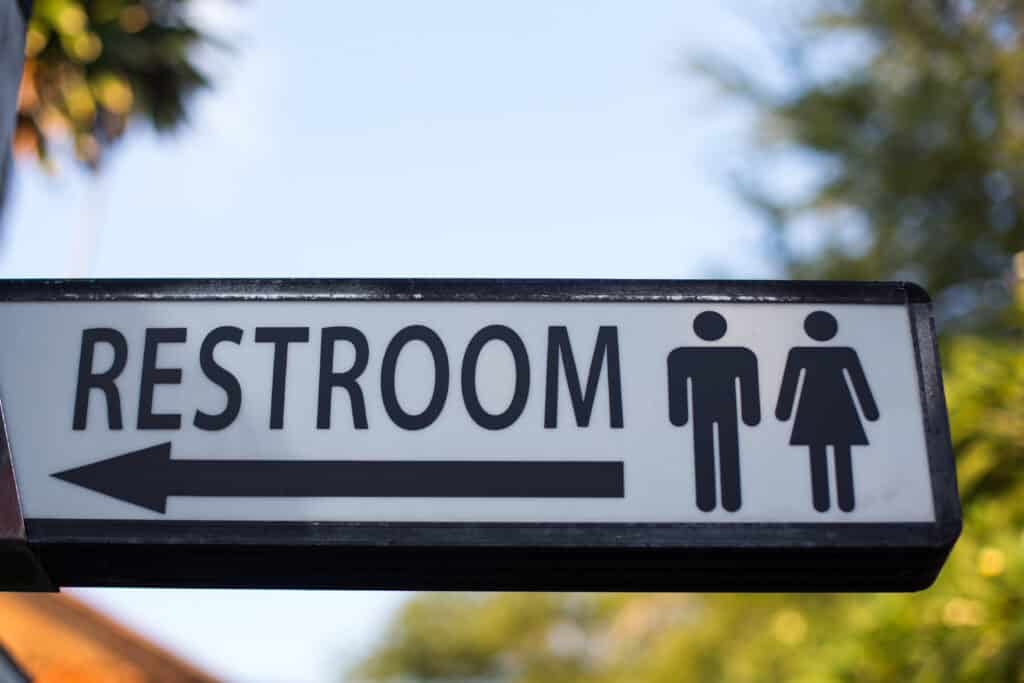
There are four main types of urinary incontinence:
Stress Urinary Incontinence (SUI)
SUI is characterized by involuntary urine leakage during activities that increase pressure inside the abdomen and push down on the bladder. Common triggers include:
- Coughing and sneezing: The abrupt force exerted on the bladder causes a brief but strong pressure that may push out urine.
- Laughing: A hearty laugh can cause abdominal pressure similar to coughing, potentially leading to leaks.
- Lifting heavy objects: Raising something hefty stresses the pelvic floor muscles, which, if weakened, may not hold urine back effectively.
- Exercising: Physical activities, especially high-impact ones like jumping or running, can place repetitive strain on the bladder, resulting in incontinence. The primary cause is often a weakening or damage to the pelvic floor muscles and ligaments supporting the bladder.
Urge Incontinence (Overactive Bladder)
This is a sudden and intense urge to urinate, followed by an involuntary loss of urine. Symptoms include:
- Unexpected urgency: The feeling of urinating is so immediate and intense that it’s hard to make it to the bathroom in time.
- Frequent urination: Individuals may need to go much more often than usual.
- Nighttime urination: Affected individuals might wake up multiple times during the night to urinate. The root cause can be bladder muscles contracting involuntarily, even when the bladder’s urine volume is low.
Overflow Incontinence
This form of incontinence involves the bladder not emptying properly, leading to overflow. Symptoms encompass:
- Constant dribbling of urine: Since the bladder is always somewhat full, small amounts leak continuously.
- Difficulty starting the urine stream: There’s a perceived need to go, but starting can be challenging.
- A sensation of not completely emptying the bladder: Even after urinating, there’s a persistent retention feeling. This can arise from a blockage or obstruction of the bladder, weakened bladder muscles, or nerve damage that disrupts signals between the brain and the bladder.
Functional Incontinence
While the urinary system might function correctly, other health or environmental factors prevent proper toilet use. Situations include:
- Mobility problems: Arthritis, or any other condition affecting mobility, could make reaching a toilet in time hard.
- Cognitive impairments: Diseases like Alzheimer’s or other forms of dementia might mean an individual doesn’t recognize the need to urinate or forgets where the bathroom is.
- Environmental barriers: These can be physical barriers like being far from a restroom or situations like being in a vehicle or a place where it’s challenging to undress quickly. Functional incontinence is less about the urinary system’s function and more about other factors that prevent timely urination.
Some people may have more than one type of urinary incontinence, called mixed incontinence. The most common combination is stress and urge incontinence.
Causes and Risk Factors
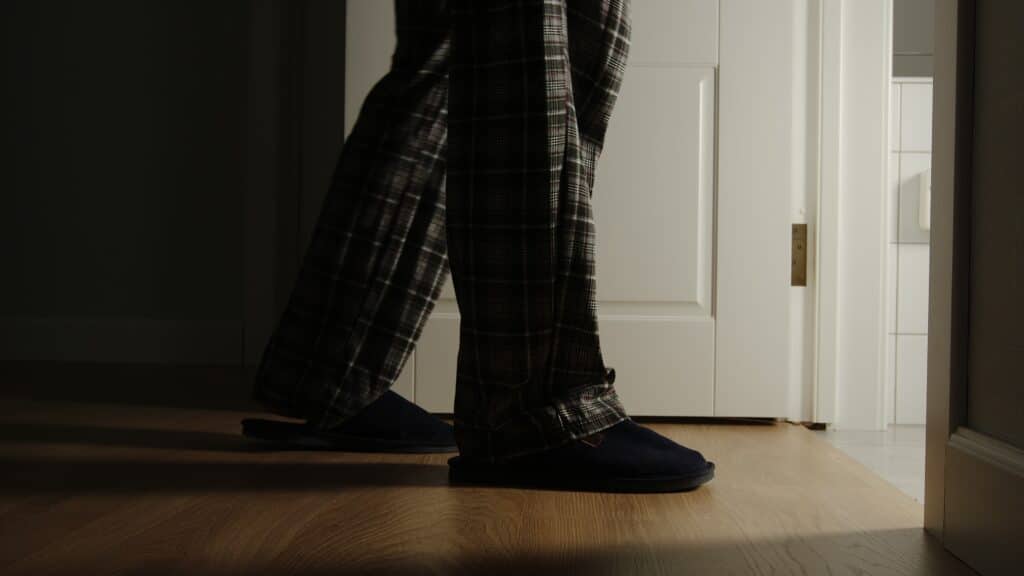
Causes and risk factors for incontinence are anything that can weaken or damage your bladder or pelvic floor muscles or decrease your control over your bladder. Some of these factors are:
Age and Bladder Control
In our later years, it’s natural for some bodily changes to come to the forefront. Among these, seniors might notice changes in bladder function.
As age progresses, the bladder and pelvic floor muscles can become less resilient, leading to difficulty holding in urine or managing sudden urges. But remember, these changes are a part of the aging process, and there are solutions and exercises to support and strengthen these areas.
Gender’s Influence on Urinary Health
For senior women, a unique set of circumstances could influence bladder health. Specifically, phases like pregnancy, childbirth, and even menopause can put additional strain on the bladder and pelvic floor muscles even later in life.
Due to these life events and hormonal shifts, women are often more prone to stress and urge incontinence. Understanding these changes, talking openly about them, and seeking guidance when needed is essential.
Obesity’s Strain on Bladder Function
Maintaining a healthy weight is crucial for numerous reasons, and bladder health is one of them. For seniors carrying extra pounds, this additional weight can place undue pressure on the bladder and its supporting muscles.
This can result in these muscles weakening or not working as efficiently, leading to potential incontinence issues. A balanced diet and regular exercise can help manage weight and, as a result, support bladder health.
The Connection Between Smoking and Bladder Health
It’s no secret that smoking has various adverse effects on our health. For senior citizens, there’s another reason to reconsider this habit. Smoking can irritate the bladder and, coupled with regular coughing associated with the habit, can lead to episodes of stress incontinence.
Moreover, the harm to blood vessels and nerves from smoking can disrupt optimal bladder function. Reducing or quitting this habit can bring multiple health benefits, including improved bladder control.
Diabetes and Its Impact on Urination
For seniors managing diabetes, there are some additional considerations related to bladder health. Elevated blood sugar levels can lead to increased frequency of urination and a higher risk of infections.
Additionally, diabetes can impact the nerves and muscles governing bladder control. Regular check-ups and managing blood sugar levels are critical for overall health and maintaining good bladder function.
Neurological Disorders and Bladder Signals
Certain conditions that affect the brain or spinal cord—like stroke, Parkinson’s disease, or multiple sclerosis—can disrupt the communication between the bladder and the brain.
When one of these conditions begins causing problems, seniors might find it challenging to control urination. Being informed and proactive about these conditions can help manage their effects on bladder health.
Prostate Issues and Men’s Urinary Health
For senior men, the prostate can sometimes become a topic of concern. An enlarged prostate, prostate cancer, or post-prostate surgery conditions can influence urinary incontinence. This is due to the potential pressure or harm caused to the urethra or bladder neck.
Regular screenings and discussions with healthcare providers can help navigate these challenges.
Other Medical Conditions to Consider
Several other medical conditions can influence bladder health. These include urinary tract infections, constipation, and more complex issues like kidney stones, bladder stones, or even bladder cancer.
Conditions like overactive bladder, interstitial cystitis, and pelvic organ prolapse can also play a role. Awareness, regular check-ups, and open discussions with healthcare professionals can help seniors effectively manage and address these conditions.
Not everyone who has these factors will develop urinary incontinence, and some people who have urinary incontinence may not have any of these factors. The best way to determine the cause and type of your urinary incontinence is to consult your doctor and undergo a thorough evaluation.
Treatment for Urinary Incontinence
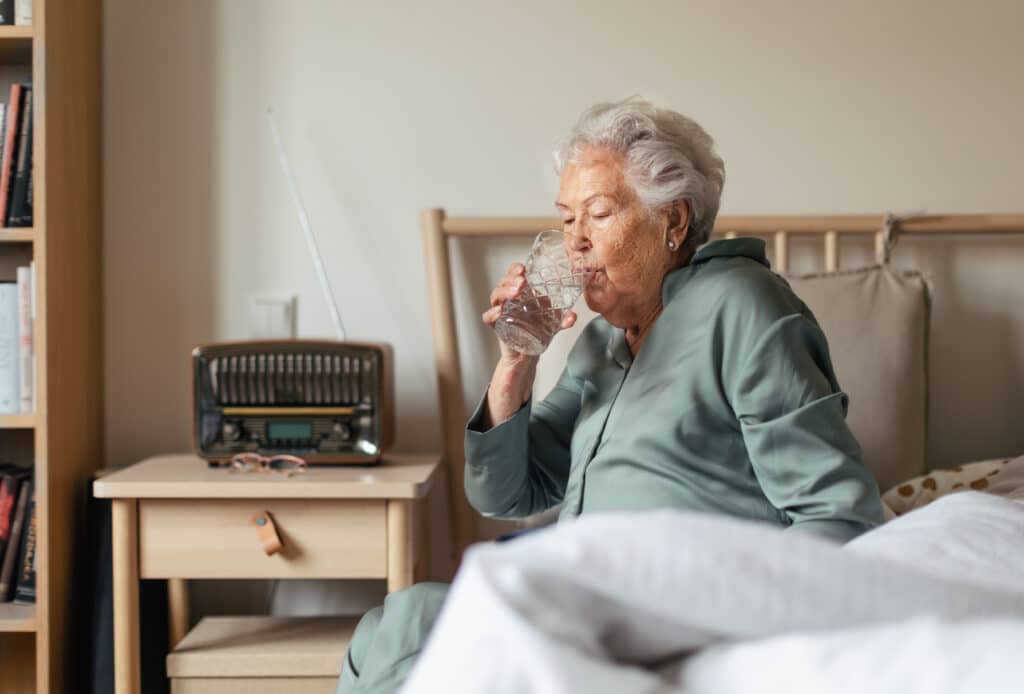
Conservative treatment for incontinence is usually the first line of treatment for both stress and urge incontinence. The following are both conservative and non-conservative treatment options:
Lifestyle changes can help you manage incontinence by reducing the factors that can worsen it. These include losing weight, quitting smoking, avoiding bladder irritants, treating constipation, and avoiding heavy lifting.
Bladder training can help you retrain your bladder to hold more urine and reduce the urge to urinate.
Pelvic floor muscle exercises, also known as Kegel exercises, can help you strengthen your pelvic floor muscles and improve your bladder control. You should consult your doctor or a physical therapist to learn how to do them correctly and safely.
Electrical stimulation can help you treat urge incontinence by stimulating your nerves and muscles that control your bladder function.
Medications and medical devices include topical estrogen creams or rings, alpha-adrenergic agonists, duloxetine, urethral inserts, electoral neuromodulation devices, or pessaries. You will need to consult your doctor before using them.
Botox injections can help treat urge incontinence.
Surgery can sometimes help treat stress incontinence by repairing or supporting your pelvic floor muscles, urethra, or bladder neck. However, surgery is usually considered a last resort when other treatments have failed or are unsuitable.
Physical Therapy for UI
A physical therapist trained in pelvic floor dysfunctions can help you with incontinence. They will use various conservative techniques depending on the type of incontinence you experience. These techniques may include any or a combination of the following:
- Pelvic floor exercises teach you how to use your pelvic floor muscles correctly and effectively and coordinate them with your breathing and abdominal muscles.
- Education on lifestyle changes will help manage your symptoms to prevent or eliminate occurrences of UI.
- Biofeedback uses sensors and monitors to measure and display your pelvic floor muscle activity, bladder pressure, or urine flow.
- Electrical stimulation uses mild electrical pulses to stimulate your pelvic floor muscles or nerves. This can help you strengthen your pelvic floor muscles, improve your bladder control, and reduce the urge to urinate.
- Manual therapy involves using hands or tools to manipulate or massage your pelvic floor muscles or tissues. This can help you relax or stretch muscles, improve blood flow, reduce pain, or release trigger points.
Physical therapy can also be combined with other treatments, such as medications, devices, or surgery, to enhance their effectiveness.
Key Takeaways
- Urinary incontinence is common among seniors but is not inevitable in aging.
- It’s a symptom, not a disease, often caused by issues with the bladder or pelvic floor muscles.
- Four main types are stress, urge, overflow, and functional incontinence.
- Age, gender, obesity, smoking, diabetes, neurological disorders, and prostate issues can influence urinary health.
- Treatment options include lifestyle changes, bladder training, pelvic floor exercises, medications, and sometimes surgery.
- Physical therapy can significantly benefit those with urinary incontinence, offering techniques like biofeedback and electrical stimulation.
FAQs
Can dietary habits influence urinary incontinence?
Certain foods and drinks can act as diuretics or irritate the bladder, increasing the risk of incontinence.
Is there a link between hydration levels and urinary incontinence?
While staying hydrated is essential for health, excessive water intake can increase the frequency of urination. It’s essential to balance hydration without overconsumption.
Are there specific exercises other than Kegels that can strengthen the pelvic floor?
Squats, bridges, and wall sits can also help strengthen the pelvic muscles and improve urinary control.
Can emotional or psychological stress exacerbate urinary incontinence symptoms?
Emotional stress doesn’t directly cause incontinence but can increase the frequency or urgency, especially in those predisposed to the condition.
Is there a genetic predisposition to urinary incontinence?
Some studies suggest a potential genetic link, as those with family members experiencing UI may have an increased risk. However, environmental and lifestyle factors also play a significant role.
References
A. Cohn et al., “Urinary Incontinence,” Merck Manual Consumer Version, https://www.merckmanuals.com/home/kidney-and-urinary-tract-disorders/symptoms-of-kidney-and-urinary-tract-disorders/urinary-incontinence.
Mayo Clinic Staff, “Urinary Incontinence,” Mayo Clinic, https://www.mayoclinic.org/diseases-conditions/urinary-incontinence/symptoms-causes/syc-20352808.
National Institute on Aging, “Urinary Incontinence in Older Adults,” National Institute on Aging, https://www.nia.nih.gov/health/urinary-incontinence-older-adults.
National Institute of Diabetes and Digestive and Kidney Diseases, “Kegel Exercises,” National Institute of Diabetes and Digestive and Kidney Diseases, https://www.niddk.nih.gov/health-information/urologic-diseases/bladder-control-problems-women/kegel-exercises.
National Institute of Diabetes and Digestive and Kidney Diseases, “Urinary Incontinence,” National Institute of Diabetes and Digestive and Kidney Diseases, https://www.niddk.nih.gov/health-information/urologic-diseases/bladder-control-problems.
American Academy of Family Physicians (AAFP), Clinical Management of Urinary Incontinence in Women; May 1, 2013. [Online]. Available: https://www.aafp.org/pubs/afp/issues/2013/0501/p634.html
American physical therapy association, (APTA) Guide | Physical Therapy Guide to Urinary Incontinence | Choose PT https://choosept.com/guide/physical-therapy-guide-incontinence
Urology Care Foundation, “What is Urinary Incontinence?” Urology Care Foundation, https://www.urologyhealth.org/urology-a-z/u/urinary-incontinence.

